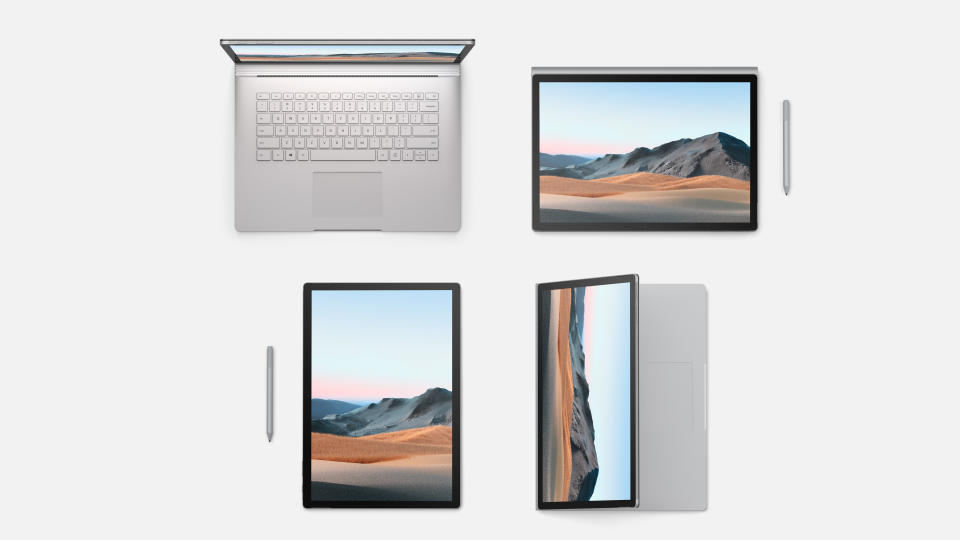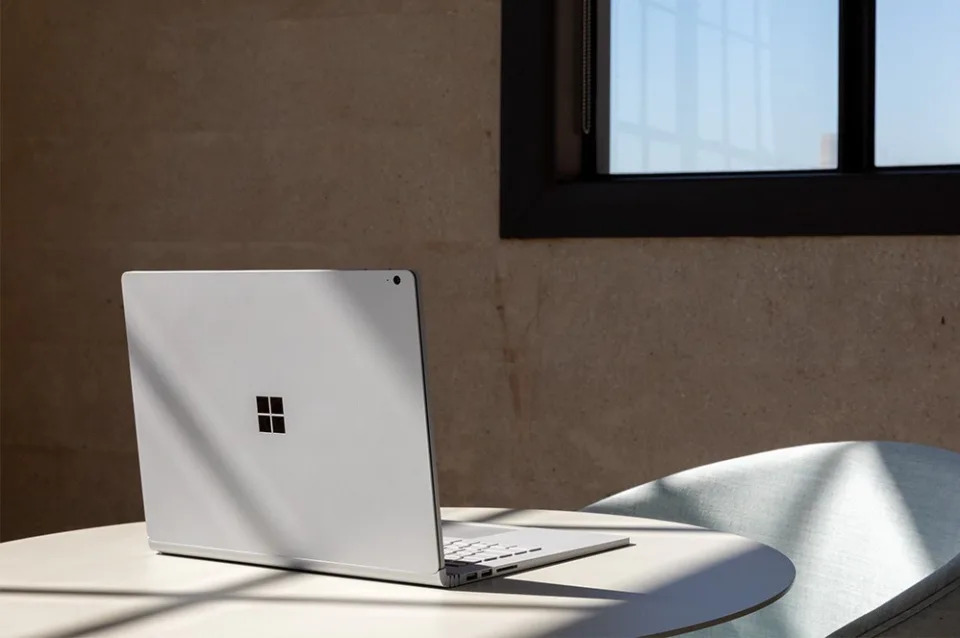Microsoft’s Surface Book 3 is a powerhouse rival to Apple’s MacBook Pro
Microsoft has one of the most impressive lines of computer hardware on the market in its Surface family of devices. From the Surface Laptop 3 to the Surface Pro 7, the tech giant has proven time and again that it is a top-flight hardware producer.
And perhaps the most powerful machine in Microsoft’s (MSFT) stable is its new Surface Book 3. A two-in-one hybrid, the Book 3 has a unique construction that allows it to be used either as a laptop or, when you detach its display, as a high-powered tablet.
It’s an impressive system and can handle your most demanding tasks including compiling code, editing video, and playing games, but you’re going to pay a steep price for the privilege of owning one. We’re talking $1,599 for the base 13.5-inch model and, gulp, $2,299 for the 15-inch version.
But despite a few flaws, namely how incredibly hot it can get, it’s a monster of a system that’s sure to please those in need of a Windows-powered beast.
A unique hybrid system
The Surface Book 3 is a laptop-tablet hybrid. But unlike other such devices that have screens that can flip around 360 degrees, the Book 3’s display completely detaches from the system via a special button-activated mechanism.
The mechanism releases the display, allowing it to be used as a tablet on its own. But what’s impressive is, the Book 3’s base isn’t just a bunch of batteries that give the device longer battery life. While the Book 3’s central processing unit (CPU) is built into the display, that’s why there are vents running around the panel’s backside, it’s graphics processing unit (GPU) is built into the base.

When you press the detach button, you’re actually telling the system that you want to cut off the GPU from the display. If you’re not actively using the GPU, you’ll be able to detach the screen as soon as you get the “Ready to detach” message. If you’re using the GPU, say you’re playing a game or compiling video, you won’t be able to detach the display. Instead, you’ll see a red light appear on the detach button.
I reviewed the 15-inch version of the Book 3 and found the display to be a bit too large to use as a tablet on its own for long periods of time. Instead, I preferred either using it in laptop mode, or detaching the screen and reattaching it backwards. It’s chunkier than using it as a straight tablet, but more practical for things like watching movies without having the keyboard in the way.
From an aesthetic perspective, the Surface Book 3 shares the same look as the Surface Book 2 and original Surface Book. You’ve got the same industrial design with a large, and super-comfortable keyboard, an accordion-like hinge, along with two USB ports and a media card reader on its left side and a USB C port on its right.
Unfortunately, the USB C port on the Book 3 doesn’t support Thunderbolt connectivity. So you won’t be able to connect, say, an external graphics card to really up the ante on performance to near desktop class.
A fantastic display with tons of performance
Microsoft hasn’t changed much as far as the display for the Surface Book 3 goes, and that’s fine. The company’s PixelSense panel is already one of the best around, and continues to offer fantastic colors and deep blacks.
Inside, the Surface Book 3 gets a completely upgraded hardware setup. Microsoft has thrown in Intel’s (INTC) latest 10th-generation Core Intel Core processors with the 13.5-inch model getting a Core i5 chip or an optional Core i7, and the 15-inch model getting only the Core i7.
The base 13.5-inch model starts at $1,599 with the Core i5 chip, 8GB of RAM, and 256GB of storage. That version features shared graphics processing rather than a discrete GPU, so you shouldn’t expect it to handle high-end games or the kind of video encoding performance you’ll get out of the pricer units.
For comparison, Apple’s (AAPL) 13-inch MacBook Pro with a 10th-gen Core i5 processor starts at $1,799 but also includes 16GB or RAM and 512GB of storage, so you’ll be able to squeeze out more performance, though don’t get the detachable display.

The most outrageous Book 3 you can get is the 15-inch model with a 10-gen Core i7 chip, 32GB of RAM, 2TB of storage, and an Nvidia (NVDA) Geforce GTX 1660 Ti graphics chip for $3,399. Yikes.
Apple’s 16-inch MacBook Pro can be equipped with a 9th-gen Core i7 chip, a ridiculous 64GB of RAM, 8TB of storage, and an AMD Radeon Pro 5500M with 6GB of video RAM for (do double-take) $6,099.
I’ve been using the Surface Book 3 with a Core i7 processor, 32GB of RAM, 512GB of storage, and an Nvidia Geforce GTX 1660 Ti chip, and it’s been a performance powerhouse.
When it comes to more demanding processes, playing games for instance, the Book 3 handled most of what I threw at it with ease. “Forza Horizon 4” ran like a dream on the Book 3, while “Metro Exodus,” a game that puts even high-end gaming systems to the test, was only able to run on low settings.
In other words, the system can handle those kinds of games, but it won’t be like running them on a dedicated gaming system.
One thing to note is how incredibly warm the rear of the Surface Book 3’s display got when I was downloading a number of large game files. I set aside the system to download “Forza” and “Metro” and left it on my table with the screen on as I browsed the web. When I lifted it up, I was shocked at how hot the rear panel was to the touch.
Sure, I was pushing its performance, but I’d expect better cooling from the Surface.
As far as battery life, I managed to run my usual day of web browsing, checking email, streaming video, and writing before having to charge up again at the end of my work day.
Should you get it?
The Surface Book 3 offers impressive performance and flexible capabilities in a stylish package that’s uniquely Microsoft. The pricing is hard to swallow, but that can be said of competing systems at this level like Apple’s MacBook Pro.
Average consumers will likely find themselves opting for something on the less expensive side, like Microsoft’s own Surface Laptop 3, which starts at $999, Dell’s $1,199 XPS 13, or Apple’s $999 MacBook Air. Each of those offers quality performance, at a more affordable price.
But those looking for serious firepower and functionality will find the Book 3 to be a worthy buy.
Got a tip? Email Daniel Howley at danielphowley@protonmail.com or dhowley@yahoofinance.com, and follow him on Twitter at @DanielHowley.
More from Dan:
Microsoft debuts supercomputer for developing human-like artificial intelligence
Cisco boasts ‘amazing uptake’ of WebEx as locked-down users users flock to video conferencing
It’s gone ‘shockingly well’: America’s hospitals have embraced remote technology amid COVID-19
Follow Yahoo Finance on Twitter, Facebook, Instagram, Flipboard, SmartNews, LinkedIn, YouTube, and reddit

 Yahoo Finance
Yahoo Finance 
